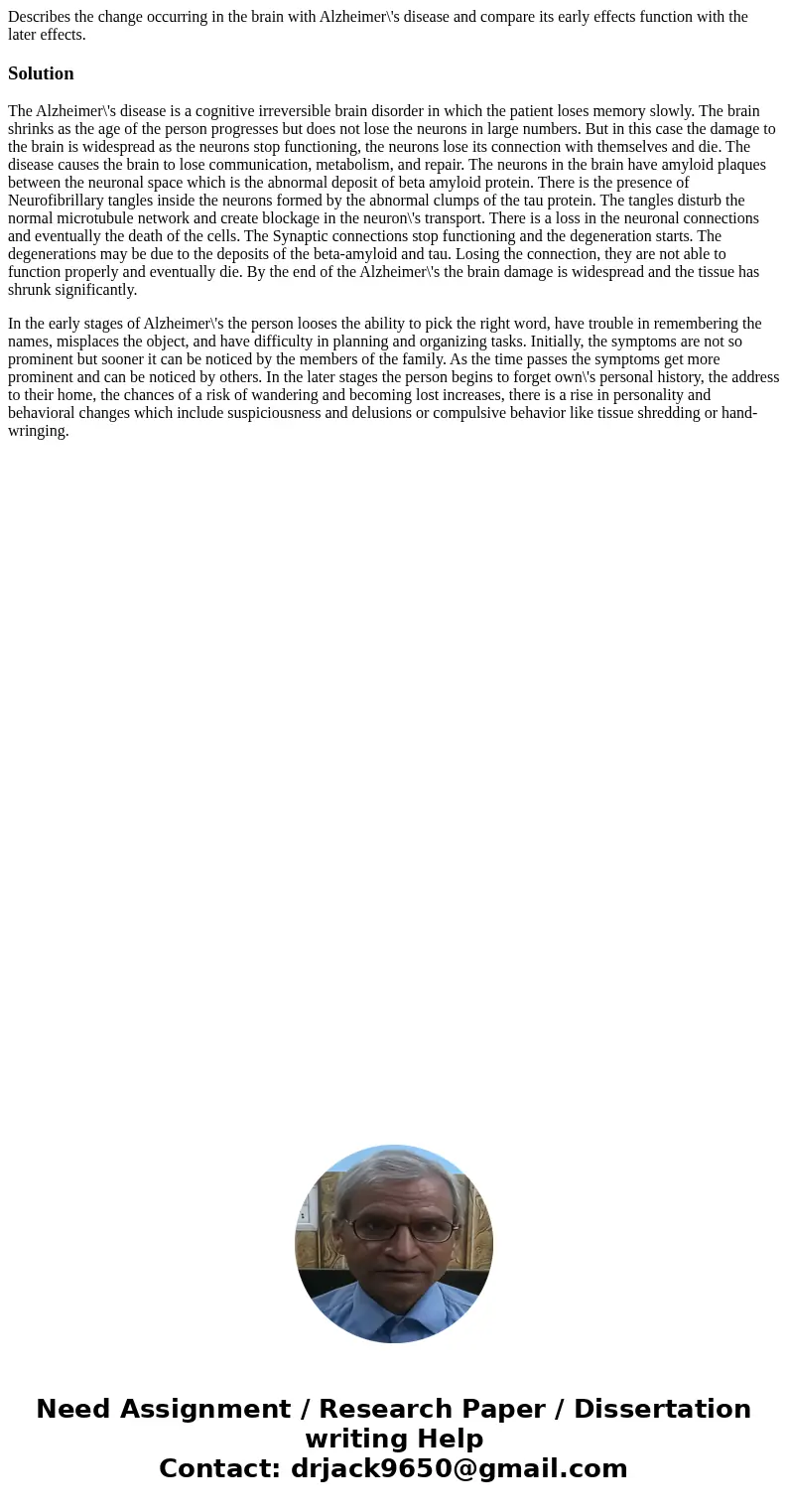Describes the change occurring in the brain with Alzheimers
Solution
The Alzheimer\'s disease is a cognitive irreversible brain disorder in which the patient loses memory slowly. The brain shrinks as the age of the person progresses but does not lose the neurons in large numbers. But in this case the damage to the brain is widespread as the neurons stop functioning, the neurons lose its connection with themselves and die. The disease causes the brain to lose communication, metabolism, and repair. The neurons in the brain have amyloid plaques between the neuronal space which is the abnormal deposit of beta amyloid protein. There is the presence of Neurofibrillary tangles inside the neurons formed by the abnormal clumps of the tau protein. The tangles disturb the normal microtubule network and create blockage in the neuron\'s transport. There is a loss in the neuronal connections and eventually the death of the cells. The Synaptic connections stop functioning and the degeneration starts. The degenerations may be due to the deposits of the beta-amyloid and tau. Losing the connection, they are not able to function properly and eventually die. By the end of the Alzheimer\'s the brain damage is widespread and the tissue has shrunk significantly.
In the early stages of Alzheimer\'s the person looses the ability to pick the right word, have trouble in remembering the names, misplaces the object, and have difficulty in planning and organizing tasks. Initially, the symptoms are not so prominent but sooner it can be noticed by the members of the family. As the time passes the symptoms get more prominent and can be noticed by others. In the later stages the person begins to forget own\'s personal history, the address to their home, the chances of a risk of wandering and becoming lost increases, there is a rise in personality and behavioral changes which include suspiciousness and delusions or compulsive behavior like tissue shredding or hand- wringing.

 Homework Sourse
Homework Sourse